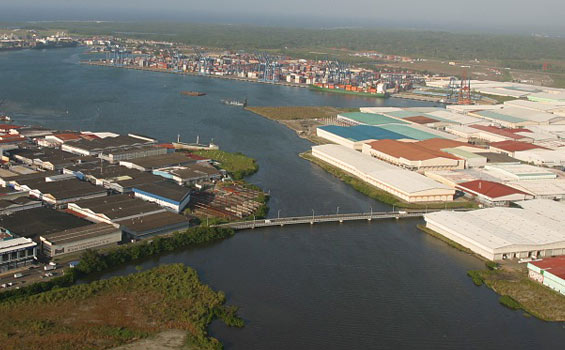Location is one of the main keys to the enormous success of the Colon Free Zone, making it an ideal hub in this age of globalization of the world’s economy. The Colon Free Zone is the main commercial distribution center for the hemisphere. To this end the Zone is constantly reconstructing and modernizing warehouse, shipping and transit systems for all types of merchandise, keeping one step ahead of modern technology and always ready to offer the best multimodal services.
Nearly all world routes pass the Colon Free Zone, located as it is at the Atlantic gateway to the Panama Canal, with access to both the Atlantic and the Pacific. Wholesalers and retailers travel to this Free Zone because here they are able to buy all consumer products either by the container load or in smaller quantities, because Free Zone importers specialize in bringing in container loads of goods, and breaking them down for resale.
Historically the Zone has staked its ground on importing goods duty-free from around the world and selling them to tariff-bound Latin America. With that business basis no longer relevant as Latin tariff barriers have fallen, the Zone has had to reshape and expand its business according to the ground rules now prevalent worldwide: globalization of trade, speed and efficiency of transit, and competitive prices.
Now, the 40% devaluation of the Venezuelan currency threatens the ability of the largest customer of the CFZ to pay debts in dollars.
Martesfinanciero.com reports that “In a globalized market, when a country gets a cold it is normal that another one sneezes. This is the case of Panama, and more specifically of the Colon Free Zone (CFZ), which sees a dangerous flu coming on after the roughly 40% devaluation of the Venezuelan bolivar, which has gone from 4.3 to 6.3 per dollar. ”
Surse Pierpoint, president of the Association of Members of the Colon Free Zone, expressed their fears about the impact that the devaluation of the Bolivar may have on the business of the CFZ mainly in the volume of operations, with no growth expected for 2013, and in the actual capacity of the Venezuelan clients to honor their obligations
Venezuela is the main customer of the CFZ. In 2012 nearly 15 billion dollars were re-exported from this area, of which 3 billion went to Venezuela, 18% of the businesses of the CFZ.
Source: martesfinanciero.com
